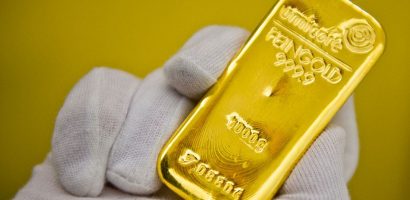Different elements in the periodic table belong to various categories like alkali metals, alkaline earth metals, metalloids, non-metals, halogens, noble gases, lanthanides, actinides, etc. Each of these elements has different properties and functions.
The Nickel element is a transition element belonging to the ferromagnetic metal group also called VIIIb elements. This element is known to have resistance against oxidation and corrosion. This element has various properties that help in defining its different applications.
Chemical Element Nickel (NI)
The element Nickel is denoted as Ni and has an atomic number of 28 and atomic weight of 58.69. The metal has a very high melting point of 1453 degrees Celsius and the boiling point of 2732 degrees Celsius. Nickel is a tough silvery-white metal harder than iron and has a density of 8.902 kg/m3.
The chemical element Nickel is used as a pure form or as an alloy for various domestic and industrial purposes. The metal has a lustrous appearance with a silvery-white to slight golden tinge. The metal is hard and ductile. The powdered metal with a higher surface area is chemically more reactive as compared to the larger piece that is very slow to react.
Nickel Element Discovery
The earth’s crust contains very little pure nickel element and is generally available in form of ultramafic rocks. It is present as metallic meteorites since ancient times. The antique artifacts made from these metallic meteorites are seen since 5000BC in the graves in Egypt. Nickel was discovered as an element in the 1750s.
A dark red ore was discovered in the 1600s having a green coating and was a source of irritation for the copper miners in Germany. It was believed to be the ore of copper but the scientist was not able to extract copper from it.
This ore was named ‘kupfernickel’ that means ‘goblin’s copper’ due to its view as goblins that prevented extracting copper. Early reactions included heating the copper compound with charcoal for yielding while metal. This was not copper so other tests were performed for identification.
Swedish chemist Axel Cronstedt performed numerous experiments to determine this kupfernickel as nickel arsenide. His pupil George Brandt discovered cobalt. Cobalt and nickel are closely related and are placed immediately beside Nickel in the periodic table. The method to purify nickel from the nickel carbonyl was patented by Ludwig Mond in the early twentieth century. This process is in use today for the purification of nickel.
Uses & Properties of Chemical Element Nickel
Nickel has a unique property on resistance to corrosion thus it is widely used for coating other metals for providing corrosion resistance. Nickel is used along with other metals for making various alloys like stainless steel.
One of the most commonly used alloys is nichrome that contains nickel, chromium, and a small amount of manganese, silicon, and iron. This alloy is resistant to corrosion even in red hot conditions thus used in appliances like ovens, toasters, etc.
The nickel property of being non-corrosive makes copper-nickel alloy useful in desalination plant that converts seawater to freshwater. The nickel steel alloy is used for armor plating. Some other alloys of nickel are used for making boat propellers, turbine blades, etc. Nickel is one of the important components of batteries.
The rechargeable batteries include nickel-cadmium and nickel-metal hydride batteries in hybrid vehicles. Other uses of nickel include making coins. It is also used as a catalyst for the hydrogenation of vegetable oils. Nickel is also used for imparting green color.
The role of the nickel element in biological activity is not known but it is known to affect plant growth. It is an essential element required for the growth of some specific species. Certain nickel compounds are known to be carcinogenic and a leading agent for causing cancer if inhaled. It can cause skin and respiratory allergies in certain people.
Nickel is available in food materials like oats, beans, wheat germ, peas, grains, soybeans, chocolate, whole wheat, unpolished rice, etc.
Measuring The Weight of Nickel
There are different units used for measuring the weight of the nickel. The weight of every element differs as it depends on various factors like its volume, molecular weight, density, atomic number, etc. Properties of this element vary for every molecule, so the weight of the molecule changes accordingly.
The density of nickel is 8.908 kg/m3, so it weighs 8.908 grams per cubic centimeter however the mentioned weight will be the same only when it is at 20 degrees Celsius in standard pressure. The metals are sold on the kilogram scale and the current weight of the nickel per kilogram is 19.32 USD.
The weight of nickel is measured in kilogram. This unit of the kilogram is referred to as kilogram-force or kgf and is equivalent to the magnitude of the force that is exerted by a mass of 1KG on a 9.81 m/s2 gravitational field. In the US customary measurement system, the density of nickel is 556.1083 pounds per cubic foot.
For weighing one mole of nickel carat, one needs to weigh 293.47 ounces. To understand how much does a nickel weighs, we need to understand that the five-cent coin used in the United States is also called nickel and has a specified weight of 5 grams or 0.176 ounces.
Nickel is popularly used for the minting of coins since 1866. For the minting of the coins from nickel, there are standard specifications for the weight of the coin. The five-cent coin is made from a mixture that contains 25% nickel and 75% copper and is also called cupronickel. The specific dimensions include the diameter of 0.835 inches (21.21 mm) and thickness of 0.077 (1.95 mm) inches. It has a smooth edge and the minting includes the picture of the face of Thomas Jefferson since 1938. The dimension of the one-cent coin includes a diameter of 0.750 inches (19.05 mm) and a thickness of 1.52 mm having plain edges.
For determining the weight of any metal, there is a certain calculation used to weigh any quantity or dimensions of the alloy that is available online. One can select the different methods used for the different alloys used like stainless steel or cobalt chrome.
The basic requirement includes the specific alloy number and the form of the material. Providing all these details and the number of pieces and their dimensions will allow in calculating the accurate weight of the metal or alloy.
Facts About Nickel Element:
There are some interesting facts about nickel metal includes:
- Nickel is one of the most commonly used metals in our everyday life in form of different alloys like stainless steel, chromium, etc. that are used for coating different materials. It is also present in daily used objects like coins, magnets, batteries, utensils, etc.
- Nickel in form of metallic meteorites is used in artifacts since 5000BC. These artifacts were found in the Egyptian graves. The majority of the antique materials seen in the museums or art galleries include a higher amount of these metallic meteorites.
-
Nickel was discovered by Swedish mineralogist Axel Fredrik Cronstedt identified it in 1751.
- Nickel element is hard. It can easily be drawn into sheets or wires of desired shapes, sizes, and dimensions.
- It has a highly polished smooth surface having a silvery-white to the golden tinge of shade.
- The first coin that included nickel was a one-cent coin having a flying eagle that contained 88% copper and 12 % nickel and was circulated in 1857-1878.
- The currency in the United States like nickel, quarters, dimes, half-dollars, etc. is still minted out of copper-nickel alloy. The nickel coin contains 25% nickel while other denomination coins include 8.33 % nickel.
- The metal Nickel conducts heat and electricity moderately.
- It has a very high melting temperature of 1453 degrees Celsius thus can easily form alloys with different metals. These different alloys are formed by deposing the metals through the process of electroplating.
-
Nickel is very efficiently used as a catalyst for various chemical reactions.
- Nickel is used in the production of vegetable oil, shortenings, margarine, different types of soaps, etc.
- The nickel element has a greenish-blue color and can be used as a coloring agent
- Nickel metal has five natural isotopes with more than 23 isotopes with different half-lives. These isotopes include nickel-58, nickel-60, nickel-61, nickel-62, and nickel-64. Out of these, nickel-58 is the most abundant isotope. There are around 18 known radioactive isotopes of nickel used in various studies.
- Ni-59 is a stable radioisotope having a half-life of 76000 years whereas the half-life of Ni-78 is 110 milliseconds. Many radioisotopes of nickel have their half-lives reported in less than 30 seconds. Based on its wide variation in its half-lives, it can be used for different purposes.
- Nickel belongs to the transition metals thus having the partially filled orbitals. This allows the element to have different oxidation states. These oxidation states for Nickel include from -1 to +4. +2 is the most common oxidation state of nickel.
- Nickel is ferromagnetic at room temperature. The other two elements occurring as ferromagnets include cobalt and iron. All these have a strong magnetic nature. Alnico magnets contain nickel alloys that act as permanent magnets. These magnets retain their magnetism even when heated to a very high temperature.
-
Mu-metals have the property of shielding magnetic fields. It contains 20% of iron, 80% of nickel, and some traces of molybdenum.
- Nitinol is the nickel alloy known for exhibiting shape memory. It contains equal portions of nickel and titanium heated together. The alloy can be mended to any shape as it is, cooled, and manipulated to form any structure. As this metal is heated again, it regains its structure and returns to its original shape.
- Nickel is the fifth most abundant element but does not occur in free and pure form. It is found primarily in the form of ores pentlandite, garnierite, pyrrhotite, limonite, niccolite, and millerite.
- Nickel is reported to be important for the growth of plants and microorganisms. It occurs naturally in fruits, nuts, and vegetables.
- The presence of nickel in the glass imparts green color.
- Stainless steel contains 65% of nickel, the non-ferrous alloy contains 20% nickel, plating material includes 9% of nickel. The coins, electronics, and batteries include 6% of nickel.
- The largest deposits of nickel are found in Sudbury Basin, Ontario, Canada. It covers an area of 17 miles wide by 37 miles long patch.
- Russia is the largest nickel producer and one-fifth of the global mining of this element takes place here. Other places that have larger nickel deposits include Turkey, Greece, and Finland.
-
A larger quantity of nickel can be mined from the ocean’s floor.
- Determining the amount of nickel in the meteorites can be useful in calculating the age of these meteorites.
- A Nickel is commonly used for coating the softer metals
- The Nickel is useful in making superalloys and it con combined with various metals to form different alloys that can withstand resistance to corrosion, heat, and oxidation.
- Nickel has a very sturdy nature thus it is used in the highly specialized equipment used in military, aerospace, various industries, turbines, rotors, etc. that are more prone to contact with air, water, or moisture as it is resistant to corrosion even under tough conditions.
- Exposure to an excess of nickel can lead to contact allergies like dermatitis.
- One kilogram of nickel can be drawn into a thin wire of 300 kilometers long.
- 39% of the nickel is recycled every year.
- Nickel is important in the human body in a very small quantity of 10 mg. It is essential for the optimal growth of bone structure, healthy skin, etc. It is also essential in the formation of red blood cells.
- Nickel plays an important role in the metabolism of sugars, hormones, fats, and cell membranes.
- The deficiency of nickel leads to various diseases like diabetes, cirrhosis, anemia, uremia, abnormal metabolism, renal failure, etc.
- Excess of nickel can lead to nickel poisoning and symptoms include dermatitis, respiratory cancer, respiratory organ disorder, etc.
- Pure nickel coins were used in Switzerland in 1881.
Summing it Up:
Nickel is a transition metal that is very important and has various applications. This element is found present in various food products that help in providing the essential nutrients. It is an essential component of the coating material, battery, magnets, coins, etc. Nickel is resistant to high temperature, corrosion, and oxidation.




